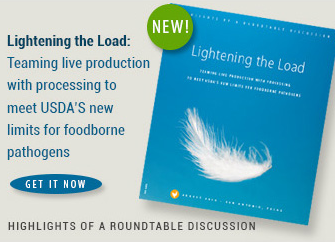FDA vet offers guidelines for managing VFDs in integrated poultry operations
Part 6 in a series
In an exclusive 90-minute interview with editors from the VFD News Centers and Poultry Health Today, William Flynn, DVM, MS, deputy director for science and policy for FDA’s Center for Veterinary Medicine, clarified some hazy points of the new veterinary feed directive (VFD) regulations that took effect January 1, 2017. In this installment, Flynn discusses how integrated poultry companies should manage and file their VFD forms.
Q: Under the new VFD rules, the veterinarian writing the order, the feed mill and the producer each has to keep a copy for 2 years.
Regarding integrated poultry companies, you said in a previously published interview, “If one firm represents the veterinarian, the feed mill and the client, it’s okay for the VFD to be stored in one place as long as everyone who needs a copy can access it and provide it to an FDA investigator upon request.”
Where should an integrated poultry company keep these copies? We’ve heard inspectors are usually going to go to feed mills first. So, should they keep them there, the veterinarian’s office or at the company’s main office? Does it matter?
WF: Yes, that’s a good question. It’s a question of accessibility. If a company is keeping only hard copies and the main office, feed mill and veterinarian’s office aren’t in the same location, and especially if they are far apart, it may be necessary to keep a copy at all three places so VFDs are readily accessible. I think that would be a safer, cleaner way to go because this way, if an issue arose, the information would be readily available.
Q: What if the company uses electronic copies that can be pulled up readily at the producer’s office, the veterinarian’s office and at the feed mill? Would that suffice and then would it be okay for an integrated company to have only the veterinarian’s original, electronic copy?
WF: As long as that information is accessible, I don’t see that as being an issue. The VFD regulation stipulates that the producer, veterinarian and feed mill each must retain VFDs for 2 years, but clearly in the case of an integrated operation, they’re all sort of one.
Posted on January 6, 2017

















